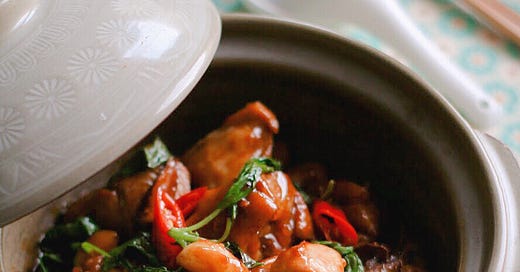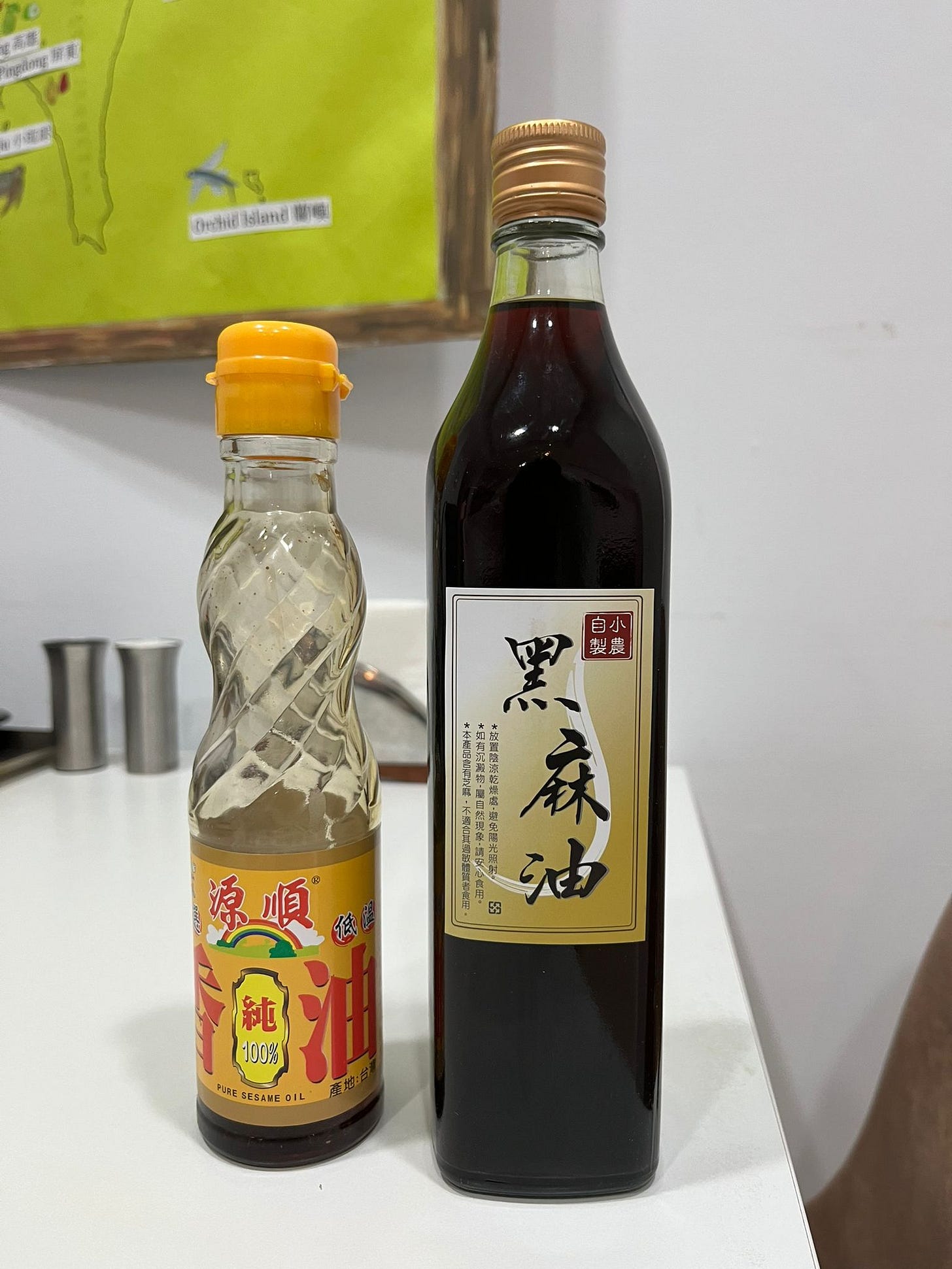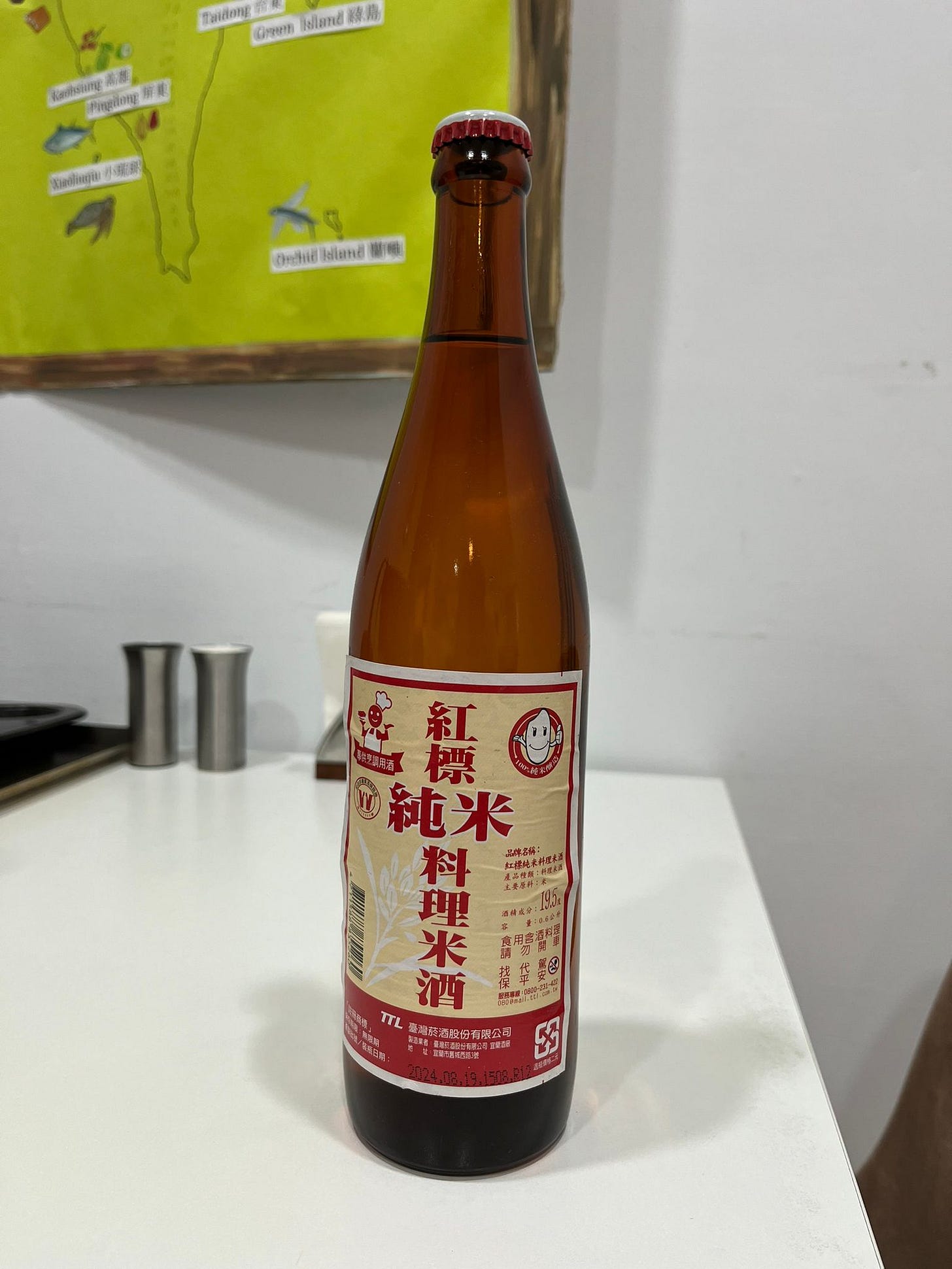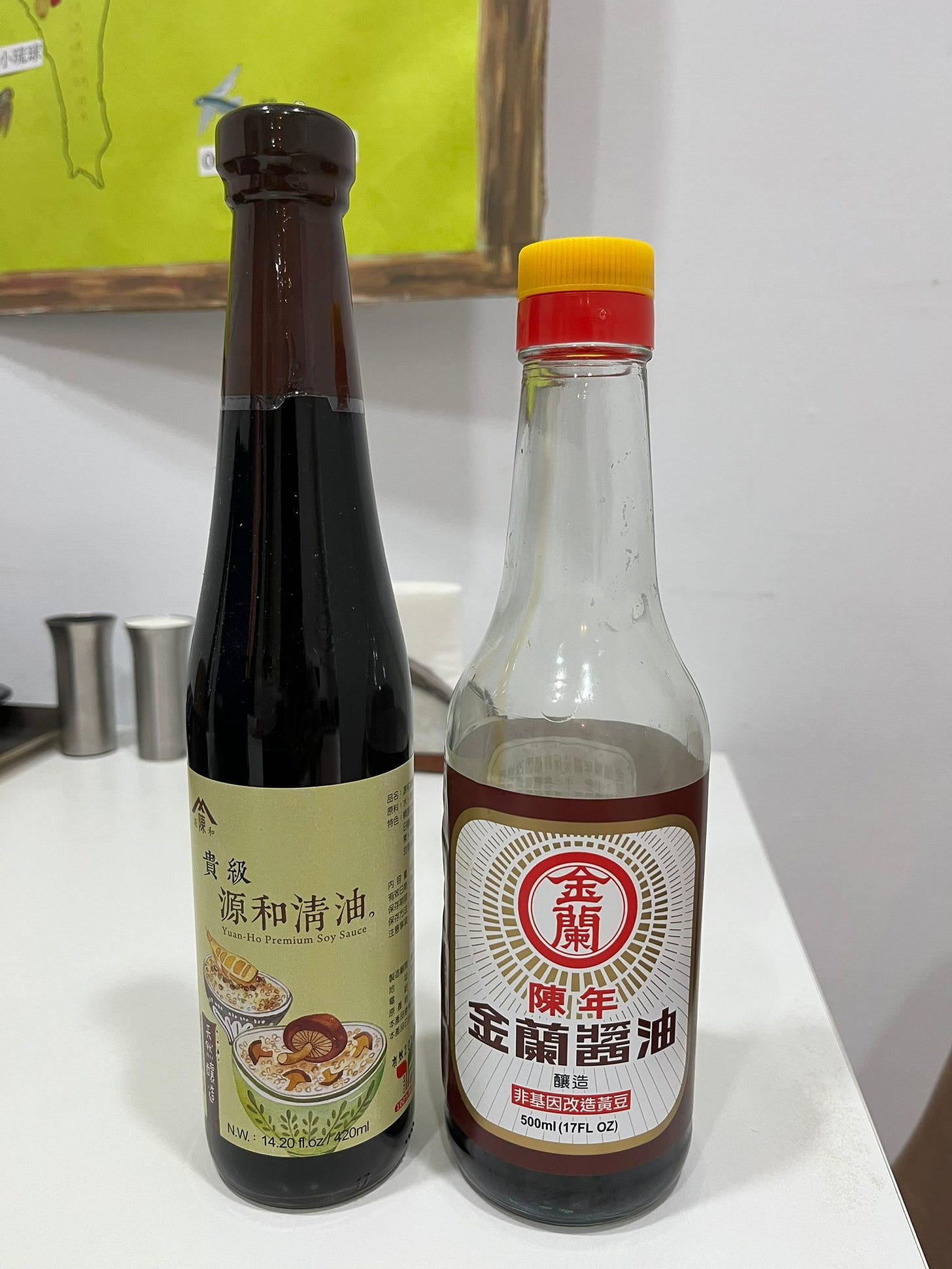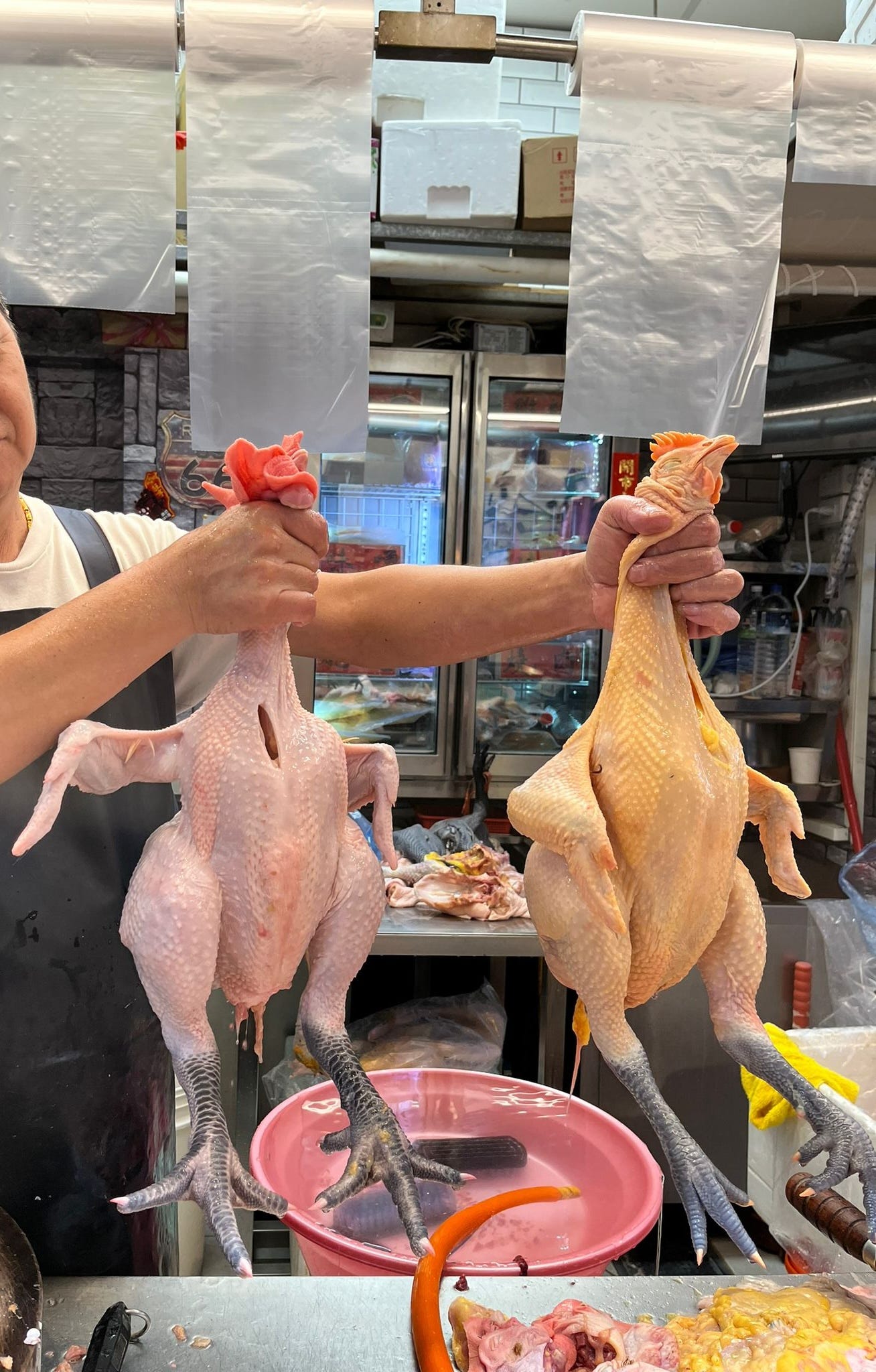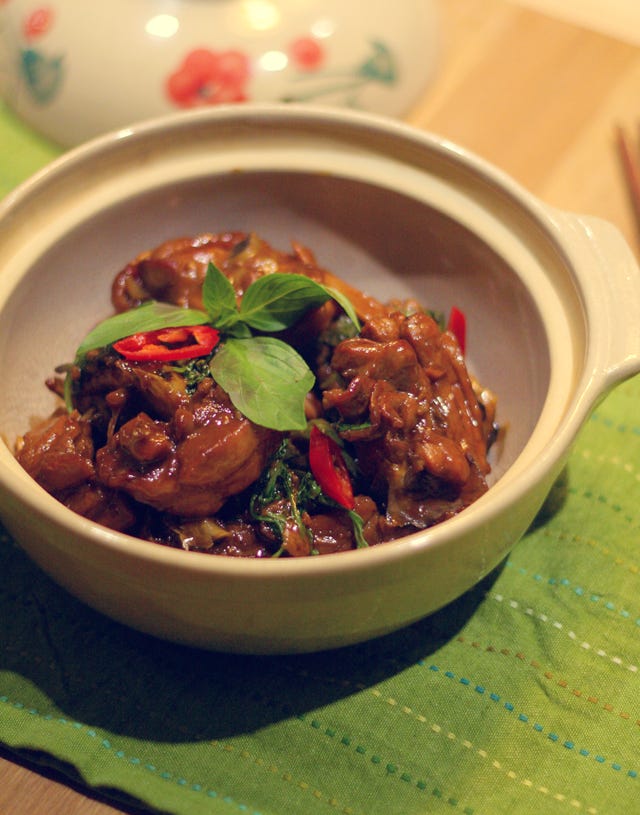✨ Welcome to Singapore Noodles, a newsletter dedicated to celebrating Asian culinary traditions and food cultures. Every Monday, you’ll be receiving a tasty mix of food history, stories, and recipes straight in your inbox. This week, I’m very excited to introduce you to Ivy Chen, a Taiwanese culinary instructor and co-author of the James Beard Award Finalist Made in Taiwan: Recipes and Stories From the Island Nation. You might have seen her in the Taipei episode of Somebody Feed Phil on Netflix or in my cookbook Plantasia: A Vegetarian Journey Through Asia. She has a wealth of knowledge and is a cook whom I deeply respect; it is my honour to have her write for the newsletter and share her recipe for three-cup chicken 三杯雞 with you.
This newsletter is 100% reader-funded — your paid subscription directly supports the writing and research, pays guest contributors, and gives you access to all content and recipes. As the newsletter grows, I’m eager to expand our community of guest contributors who will share their expertise and food stories with you. Thank you for being here and enjoy this week’s newsletter! - Pamelia✨
Three-Cup Chicken
Words and Photographs by Ivy Chen and Huang Hsiang Ting
In my 20-year career as a culinary instructor, I am often asked what my favourite dish is. What drifts to mind tends to be what my mother used to cook in my growing-up years in the South of Taiwan. These include everyday staples and more elaborate food items that she whipped up for temple festivals, such as oyster soup, pan-fried milkfish, crucian carp simmered in fermented soybean paste, fried rice vermicelli, oil rice, steamed rice kueh, salty rice cakes, and so on. As a fairly modern dish with a history that only spans several decades, three-cup chicken was not part of my mother’s repertoire. Neither had I eaten this before I left the South of Taiwan at 18 for further education in Taipei. The dish, thus, does not feature in my childhood memories despite its totemic status to Taiwanese people today.
However, as Taiwanese cuisine gradually takes its place alongside other great cuisines, with the induction of the likes of bubble tea, xiao long bao, and beef noodles into the mainstream food culture of many cities, three-cup chicken’s astronomic rise in global popularity is undeniable. It appears on the menu of every Taiwanese eatery abroad, but particularly in the hundreds of restaurants dotting Taiwan’s mountains. My first taste of it was in one such establishment, while I was on travels with my family during my university days. It arrived in a thick earthenware pot that retained the heat so well the gravy was still bubbling as it landed on the table. Its fragrance was unforgettable.
The rise of three-cup chicken
According to “Legend and Taste: In Search of the Evolution of Three-Cup Chicken in Modern Taiwan” by Kuo Pio Chung-Hao, an assistant professor at the Center for General Education of Taipei Medical University, the dish was invented in the ‘70s, a period of booming economy and flourishing tourism particularly in the mountainous regions of Taiwan. A symbiotic relationship existed there, between farmers who grew vegetables and reared chickens, and restaurants that sold stir-fries of these greens and chicken soup. One popular chicken soup was a fortifying version made with sesame oil; it is believed that three-cup chicken — a stir-fry of chicken chunks in sesame oil, soy sauce, and rice wine — was originally conceived as a quick, dry version of this soup. First, the cook heats some black sesame oil, in which ginger slices and chicken pieces are fried. Finally, soy sauce is added and the chicken is repeatedly tossed until it is cooked through and fragrant.
The eponymous “three cups”
Similar to pound cake, where the ingredient list is obvious from its name (a pound each of butter, eggs, sugar, and flour), three-cup chicken derives its name from the three seasonings of black sesame oil, rice wine, and soy sauce being added to the chicken in equal amounts.
Of these, black sesame oil 黑麻油 might be the least familiar to those outside of Taiwan. Centuries ago, large amounts of black sesame were grown in Taiwan’s southern regions and pressed to oil in factories. The Taiwanese consider the clear oil to be a fragrant, “warming” elixir to nourish the blood, skin, and gut. Believing it to be more nutritious than white sesame oil 白麻油 or “fragrant oil” 香油 — the ubiquitous oil made from white sesame — the Taiwanese cook is more prone to reaching for black sesame oil in the kitchen. Though this ingredient is not unique to Taiwan, it is almost impossible to find another Chinese cuisine that utilises black sesame oil in cooking as extensively. As this oil has a low smoke-point, it is not recommended for cooking at high temperatures. Use it instead as a finishing oil to add fragrance to dishes. When shopping, go for one that is aromatic and dark brown. It should never smell like burnt oil or appear jet-black.
Rice wine — produced from Penglai rice, the most popular rice cultivar of Taiwan — is the main cooking wine in Taiwanese cuisine. As a wine that originated from the influence of Japanese colonisation, rice wine is different from Shaoxing wine, a yellow wine used in Chinese cuisine. It has a strong rice aroma and a sweet flavour that helps to soften the gamey flavour and enhance the meaty aroma of native chicken.
Even the soy sauce used in traditional three-cup chicken is a proud Taiwanese product. Also influenced by Japanese rule, Taiwanese soy sauce is brewed from soybeans and wheat that have been allowed to ferment for months, sometimes years. In the South of Taiwan, where soy sauce is brewed exclusively from black soybeans, cooks have the option of purchasing it in different concentrations — some more suitable for dipping, others for cooking — even though the variations of light soy sauce and dark soy sauce is not prevalent in Taiwan. For my three-cup chicken, I enjoy using a blend of regular soy sauce and black soybean soy sauce to create more flavour dimension and depth; this difference may seem inconsequential but it has earned my version of three-cup chicken lots of appreciation from students.
Native chickens
Still, the most technical part lies in the selection of the chicken. Before the 1960s, chickens were raised in Taiwan, for the most part, in small numbers for private consumption. Kept in the backyards of people’s houses, the chickens were fed a diet of rice, rice bran, and leftovers from the family’s meals. Being free-roaming, the chickens also eat insects and other critters that form part of the ecosystem of the garden. With such a diet, such chickens — known locally as native chickens 土鸡 — not only boast a firm springiness and superior flavour, but also abound in natural gelatine when cooked. Because they were raised in such precious quantities, chickens were slaughtered when someone in the family was in need of nourishment. If a woman had recently given birth to a child, for example, the chicken might be brewed into the aforementioned sesame oil chicken soup as part of the confinement period, an indispensable custom in Taiwanese culture.
These days, with large-scale chicken rearing being more prevalent, native chicken is less common. However, if one were to be strict about ingredients, three-cup chicken has to feature a bird of native breed from Taiwan. There are several breeds, but the most popular of these are the red-feathered native chicken 红羽土鸡 and the black-feathered native chicken 黑羽土鸡, both of which are suitable for cooking three-cup chicken. I don’t recommend using white-meat chickens 白色肉鸡 as they come to maturity in just a month, compared to the full 4 months that native chickens require. While tender, they are bereft of the springy texture, not to mention the depth of flavour, that is characteristic of native chickens.
Most restaurants in Taiwan use whole native chickens that they chop into bone-in, skin-on chunks. At home, you can chop chicken legs into pieces yourself or get a butcher to do it for you. Using bone-in chunks lock in the meat’s juices while the act of simmering the collagen-rich chicken skin in the gravy imparts a lip-smackingly rich quality. This is why three-cup chicken is delicious. A scattering of basil gets tossed with the chicken in the final seconds of cooking; this is a modern addition that gained popularity after the ‘80s, possibly under the influence of the Hakkas living in Taiwan.
Three-cup cuisine
Once you master three-cup chicken, a world of possibilities opens up. A plethora of variations — such as three-cup squid, three-cup tofu, three-cup king oyster mushrooms, three-cup field snails, three-cup abalone, and so on — exist in Taiwan. The three seasonings are not used in exactly equal quantities but are carefully calibrated to bring out the best in the star ingredient.
Even amongst three-cup chicken dishes alone, one can find tremendous variation. The signature dish at Taipei's Chi Chia Chuang Restaurant 雞家莊餐廳, founded in 1974, features the unique addition of mi xue 米血. Literally translating as “rice blood”, mi xue is a steamed cake formed by mixing pig’s blood with sticky rice; its QQ texture and rich flavour works wonderfully in the dish. Shin Yeh Taiwanese Cuisine 欣葉台菜餐廳, founded in 1977, uses boneless chicken in lieu of the bone-in chicken pieces and adds maltose and homemade bean paste to the three-cup seasoning. These imaginative dishes are proof that, as long as you abide by the three-cup principle, you are limited only by your own creativity!
Ivy Chen is a culinary instructor, recipe developer, and the founder of Ivy’s Kitchen in Taipei, where she has been teaching about Taiwanese cuisine since 1997. Her clients include the Culinary Institute of America and Discovery Channel. She has written two books in Mandarin — one about cooking with international guests, and the other on farms in Taiwan. In 2023, her third cookbook Made in Taiwan: Recipes and Stories From the Island Nation was published in the United States. A year later, she appeared on the Taipei episode of the Netflix food series Somebody Feed Phil.
Three-Cup Chicken 三杯雞
Makes 3 to 4 servings

